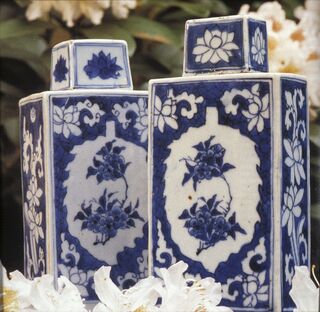Appetite
Why Collectors Take Risks to Find That One Special Object
The thrill of the chase.
Posted February 20, 2021 Reviewed by Lybi Ma
Key points
- Collectors take risks to find that special object.
- Each of us is preprogrammed to a specific level of risk that is comfortable for us. Therefore, some will take more risk than others.
- The level of risk we take can be influenced by our level of desire for the object.

The antique dealer turned so that he was directly facing me. Then, with his eyes locked to mine, he said, “Would you like to see my private collection?”
Some time ago I was visiting the Netherlands. One of my goals during my visit was to find a special antique that would fit into my collection, Chinese porcelain. Haarlem, Holland seemed like the perfect option. It is a small town about 12 miles West of Amsterdam. I thought the antique prices would be favorable compared to those in Amsterdam, and, since the town is medieval, it could have an abundance of antique treasures. I ventured to several antique stores without finding anything. The last that I visited was more promising.
The shop’s door was open to the garden; the sunny day set a welcoming and pleasant scene. Though it would have been easy to be seduced by the atmosphere, I had to remember my goal: to buy something I could not readily purchase elsewhere. I was looking for that rare treasure that might exist only in Haarlem. Surely the inhabitants of this old city by the sea participated in buying porcelain prizes brought back by the Dutch East India Company a few centuries earlier.
Sadly, I didn’t see any such piece.
However, the owner and I struck up a casual conversation about Chinese porcelain — nineteenth versus eighteenth century, etc. After five minutes or so of this repartee, the stocky, blond, somewhat ruddy-faced Dutchman turned directly to me and said, “It seems like you know something about Chinese porcelain.”
“Yes,” was my reply, “some.” And then he asked, “Would you like to see my private collection?”
This caught me completely off guard. Of course, I would like to see his private collection, but minutes were fleeing and — more importantly — he was a stranger. Weighing these factors in my mind, I asked, “Where is it?” He replied, “Upstairs.”
Conflicting thoughts ran through my mind. This man could have the most splendid porcelain piece I had ever seen; it could be something I couldn’t find anywhere else. And even better, it might be well priced. Then, again, he could be an ax murderer. This is where curiosity, hope, and perhaps even greed entered my psyche. With less hesitancy than might have been prudent, I ascended the circular metal stairway to the second floor. We reached the upper level.
It was like a haven, quiet and neat as a pin, with rooms reminiscent of a Vermeer painting. As I remember, there were two cupboards: one with a glass front and the other with wooden doors. They held his private stock. Obviously, these porcelains were high-end items meant only for his eyes, and, in retrospect, for a few others whom he deemed knowledgeable enough to see and appreciate them.
In among the objects was a pair of tall underglaze blue-and-white porcelain containers, each with a lid. They looked to have been made in China about 1640. Except for some minor grazing on the edges, they appeared to be perfect.
I didn’t know for sure what they were; I never had seen anything like them. But they did look authentic. My mind was spinning. Buying them would be taking a risk, but not buying them might be an even greater one.
“I would rather sell them to a collector than another dealer,” he said, which, of course, was supporting his price to me, which was “lower than usual.”
To me, it was satisfactory. He wasn’t giving them away, but the cost wasn’t so high that I would have to hesitate because of it. I don’t even remember bargaining.
The Appetite for Risk
Though few people would say that collectors are risk-takers, this story demonstrates that normal good judgment can go astray when a collector observes there could be an object of desire within reach. Then, she perceives a risk depending on the potential gain or loss regarding her actions. If the benefit is high compared to the loss, she acts. If the reverse is true, she does not. In my case, I thought it unlikely any harm would come to me compared to the probability I might find a treasure. In retrospect, I simply may have been lucky.
If I had been sufficiently cautious by nature, I would not have climbed the stairs that day. On the other hand, if I had an appetite for danger, I might not have given it a second thought. And, for some collectors like me, the anticipation of finding a treasure plays a part in the final decision as well. It no doubt swayed me toward taking more risk than I normally would.
Others might have made a different choice. Researchers at the University of Southern California Brain and Creativity Institute suggest people have dissimilar risk preferences when they make decisions under uncertainty. The researchers measured risk tolerance versus intolerance on volunteers while using Functional Magnetic Resonance Imaging (fMRI) in real time, which measures brain blood flow changes related to a specific stimulus.
They found a brain area associated with risk averse behavior and another connected with an appetite for risk, both located in the prefrontal cortex. This finding suggests we are inherently prone to one behavior or the other depending on how the two balance out.
If you have a collector experience that relates to this post, please contact me at https://www.collectorbrain.com/collector-experiences/share
References
Shirley M. Mueller (2019) Inside the Head of a Collector: Neuropsychological Forces at Play, Lucia Marquand, Seattle, Washington.




